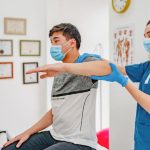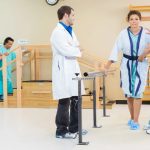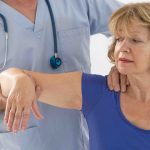A stroke can be a challenge for anyone. Recovery period is especially difficult when speech disorders can cause frustration and distress.
Stroke may have multiple and variable consequences, but with the correct approach and training, speech recovery becomes an achievable goal.
Modern rehabilitation methods, including individual speech recovery exercises, allow achieving a significant progress, even if you or your loved one has had a serious stroke.
Understanding stroke and its consequences

What is a stroke?
A stroke is a serious medical condition that occurs when the blood supply to the brain is interrupted, usually due to a blockage or rupture of a blood vessel. This leads to the rapid death of nerve cells as they do not receive enough oxygen and nutrients. Results can range from mild, temporary impairment to severe, long-term damage, including paralysis and impaired speech.
Causes and types of stroke
There are two main types of stroke: ischemic and hemorrhagic.

Ischemic stroke: This is the most common type of stroke in which a blood vessel supplying blood to the brain is blocked by a blood clot. This leads to an interruption of the blood supply to a certain area of the brain.
Hemorrhagic stroke: This type of stroke occurs when a blood vessel in the brain cracks or bursts, causing bleeding into the surrounding brain tissue.
More rarely, a stroke can be caused by a temporary interruption of blood supply to the brain, called a “transient ischemic attack” or “mini-stroke”. This often serves as a warning sign about the risk of a more serious stroke in the future.
Possible causes and risk factors for stroke include:
-
High blood pressure;
-
Diabetes mellitus;
-
Smoking;
-
Obesity;
-
Irregular heartbeat, such as atrial fibrillation;
-
Hypercholesterolemia;
-
Genetic predisposition;
-
Age and male gender.
Impact of stroke on speech function
Stroke often leads to the impairment of speech function, also known as aphasia. This can include difficulty understanding speech, forming and pronouncing words, reading and writing. Different areas of the brain control different aspects of speech, so the exact location of a stroke in the brain determines the type and extent of speech impairment. For example, a stroke in the left hemisphere of the brain, which controls speech and language in most people, most often leads to aphasia.
Signs and causes of impaired speech function

Speech disorders caused by a stroke can manifest differently depending on the area of the brain damaged during the stroke. These can include difficulty pronouncing, understanding and using words, as well as problems with reading, writing and expressing emotions through speech.
What are the types of speech disorders in stroke?
Speech disorders caused by stroke are often associated with aphasia, dysphasia, dysarthria, and dyspraxia of speech. Aphasia is an impaired ability to understand or express speech caused by damage to the brain, mainly of the left hemisphere. Dysphasia is a form of aphasia characterized by a partial loss of the ability to speak or understand speech. Dysarthria is a disorder of articulation where the patient is unable to pronounce words correctly. Speech dyspraxia is a motor planning disorder where a patient is unable to coordinate the movements necessary to pronounce words.
First symptoms and their management
The symptoms that precede a stroke are usually associated with sudden changes in bodily functions. These may include:
- Convulsive seizures: In rare cases, seizures may precede a stroke, especially with a cerebral hemorrhage.
- Sudden weakness or numbness of the face, arm, or leg, especially on one side of the body.
- Unexpected difficulty speaking or understanding speech.
- Sudden deterioration of vision in one or both eyes.
- Sudden loss of balance or coordination that occurs when walking, dizziness, or an unusually severe or sharp headache without any known cause.
- A sudden, very severe headache.
- Difficulty with motor skills, including problems with balance and coordination, or falls without any apparent reason.
- Cognitive impairment, including forgetfulness, orientation in space and time, or decreased ability to concentrate.
It should be noted that all of these symptoms require immediate medical attention, as a fast intervention can reduce the risk of stroke consequences. If you or someone close to you experiences these symptoms, call an ambulance immediately.
Role of early medical supervision and speech therapy
Starting speech therapy early can significantly improve outcomes of speech recovery. It is important that physicians and speech therapists begin working with any patient as soon as possible after a stroke to determine the extent of the speech impairment and develop a treatment plan.
aphasia signs and symptoms
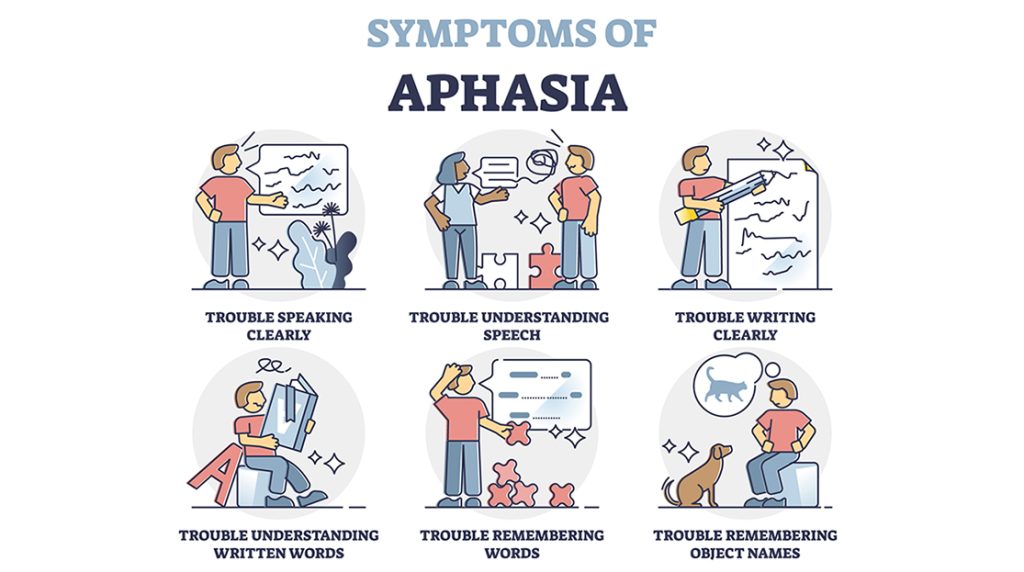
Aphasia is a speech disorder caused by damage to certain areas of the brain that control the ability to communicate. It is often the result of a stroke. There are many forms of aphasia, including the following:
Motor aphasia (Broca’s aphasia): This form of aphasia is characterized by impaired expressive speech. Patients usually have difficulty forming complete, coherent sentences. They may know what they want to say, but they cannot find right words or phrases to express their thoughts. At the same time, speech comprehension remains relatively unaffected.
Sensory aphasia (Wernicke’s aphasia): Sensory aphasia is associated with impaired speech comprehension. Patients can speak easily and fluently, but their speech may be meaningless or contain made-up words. They may also have difficulty understanding spoken and written language.
Dynamic aphasia: This form of aphasia is characterized by difficulty in forming coherent speech. Patients may have difficulty choosing right words and constructing sentences, although their ability to understand speech is usually preserved.
Acoustic-mnestic aphasia: This form of aphasia is associated with problems in perceiving and remembering speech. Patients may have difficulty comprehending long sentences or speech spoken quickly. They may also have difficulty remembering words and phrases.
Semantic aphasia: In semantic aphasia, patients have difficulty understanding the meaning of words and sentences. They may use words incorrectly or replace them with words that sound similar but have different meanings.
Total aphasia: Is is the most severe form of aphasia, in which both expressive and understanding speech are severely impaired. Patients may be almost completely mute and unable to understand both spoken and written language.
The presence and severity of these forms of aphasia can vary depending on the location and extent of brain damage. It should be noted that most people with aphasia are able to regain some or all of their speech functions with intensive speech therapy and rehabilitation.
Dysarthria signs and symptoms
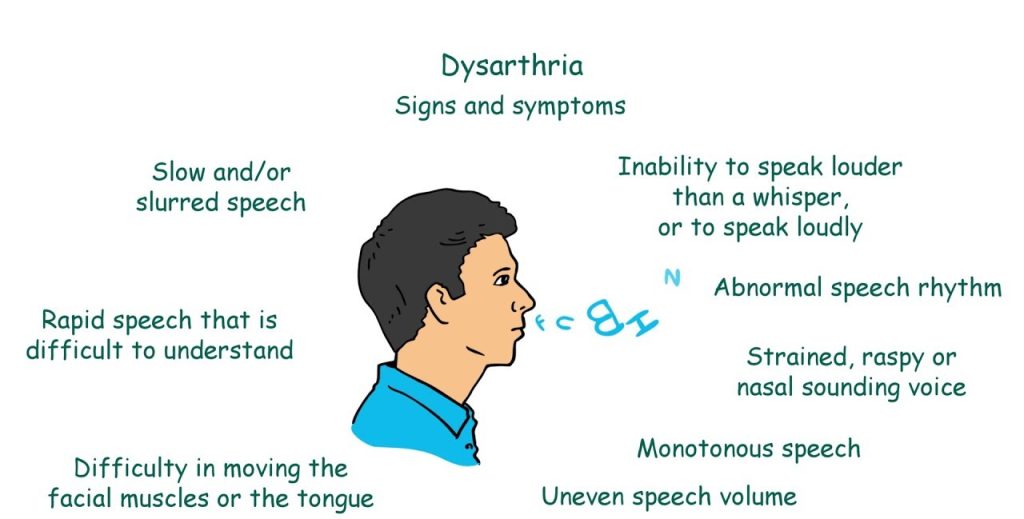
Dysarthria is a speech disorder caused by weakness, stiffness, or lack of coordination in the muscles we use to communicate. This can occur due to a variety of causes, including stroke, and manifests itself in the following way:
- Difficulty moving the organs of articulation: The muscles that control the movement of the lips, tongue, cheeks and larynx can become weak or uncoordinated, complicating word pronunciation.
- Fluent speech disorders (persistent stammering): This may be a manifestation of dysarthria. Uncontrollable speech muscles can cause frequent interruptions or stammering during conversations.
- Unintelligible and slurred speech: Words can be swallowed or distorted, making speech difficult to understand. This can be especially noticeable when speaking quickly or in long sentences.
- Problems with the rate of speech (slow or accelerated): Dysarthria can cause unpredictable changes in the rate of speech. Some people may speak too fast, while others may speak too slowly.
- Monotonous intonation (monotonous speech): Dysarthria can lead to a loss of nuances of intonation, making speech monotonous and dull.
- Grimacing: Uncontrollable facial movements, such as grimaces or uncontrollable eye movements, may accompany dysarthria.
- Changes in voice timbre: Dysarthria can lead to changes in the voice, such as hoarseness, raspy or low voice.
All of these symptoms can vary depending on the extent of damage to the speech muscles and the area of the brain that has been damaged. It should be noted that dysarthria can be improved with speech therapy and other recovery methods based on each patient’s specific needs.
Forms of dysarthria
The main forms of dysarthria that can be found in clinical practice include bulbar, pseudobulbar, cerebellar, subcortical, and cortical forms. Let’s review each of them.
- Bulbar dysarthria: This disorder occurs when the damage is in the brain stem (bulbar area). It affects the muscles that control speech, swallowing, and breathing. Bulbar dysarthria is usually characterized by slow, unintelligible speech and may be accompanied by changes in voice and trouble swallowing.
- Pseudobulbar dysarthria: This type of dysarthria is similar to bulbar dysarthria, but the brain damage is located above the brain stem, usually in both hemispheres of the brain. The main symptoms may be slow speech, emotional lability (inappropriate laughter or crying), and trouble swallowing.
- Cerebellar dysarthria: This speech disorder occurs when the cerebellum, which controls fine motor skills, including the coordination of speech muscles, is damaged. The main signs may be slurred speech, difficulty with the rate and rhythm of speech, and a change in the voice timbre.
- Subcortical dysarthria: This is the result of damage to the lower areas of the brain, which are not part of the cerebral cortex but still play an important role in movement control. Speech can be slow, blurry, and difficult to understand.
- Cortical dysarthria: In this type of dysarthria, the areas of the cerebral cortex responsible for the movement of speech muscles are damaged. Speech may be unintelligible and interrupted, with slow speed and incorrect accents.
Diagnosis and type of dysarthria are determined based on physical examination and observation of speech and swallowing. Treatment usually includes working with a speech therapist to improve control of speech muscles.
Main methods for speech recovery
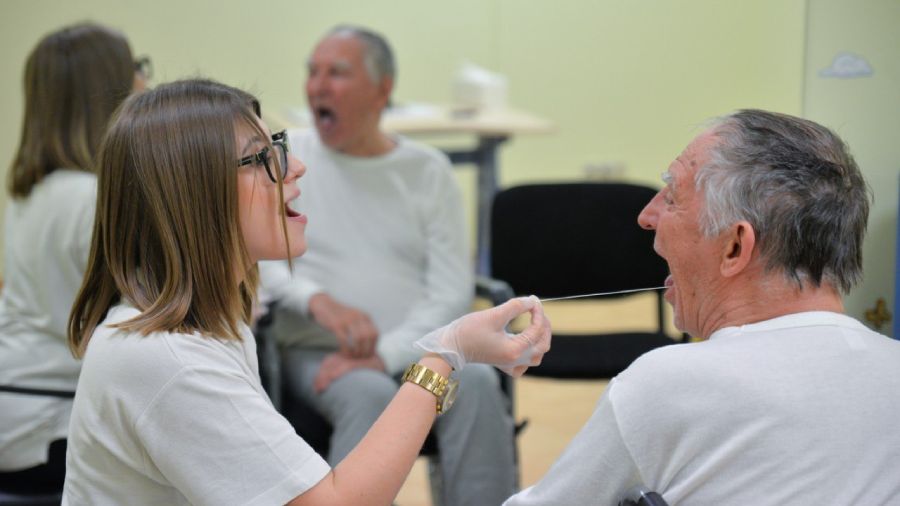
Speech recovery after a stroke can be long and demanding. Not only medical specialists, but also patient’s relatives and friends play an important role in this process. The following techniques can be useful in this context:
- Showing emotional support: Often, people who have experienced the loss or impairment of speech function feel isolated and anxious. They need to be sure that they are still dear and important to their loved ones. Be warm, caring, and give support to help them cope with feeling of vulnerability.
- Positive Attitude: Be optimistic and sure that your loved one will recover soon. Emphasize their progress, note the slightest successes and positive changes in speech. This will help strengthen his motivation and self-confidence.
- Maintaining communication: Regular communication is a key factor in recovering speech from a stroke. Don’t be shy about talking to the person, even if they cannot fully respond yet. Tell them about the latest news, your thoughts and feelings. This will help restore neural connections and improve speech comprehension.
How long does it take to recover speech after a stroke?
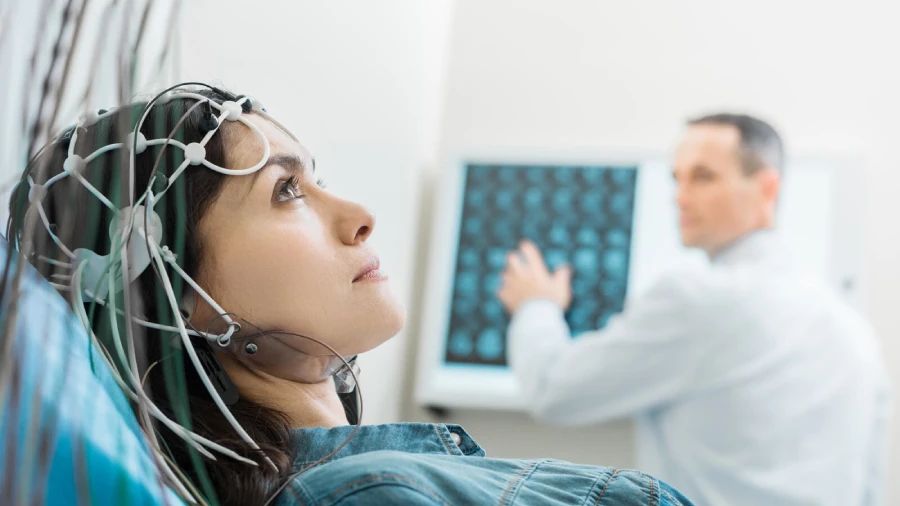
Speech recovery time after a stroke varies greatly from a person to person and depends on many factors, including general health, age, extent and location of the brain stroke, type of speech impairment, and start time of rehabilitation.
However, there is a common chronological sequence that can help in understanding the recovery process:
- First 2-4 weeks: This is a critical period when most patients experience the maximum improvement. This is due to the brain’s natural healing process and reducing swelling.
- Next 6-12 weeks: During this period, recovery continues, but the rate slows down. Many patients continue to make significant progress in restoring speech, especially with active speech therapy.
- From 12 weeks onwards: Progress may be slower, but it still continues. In some people, improvements may be seen for months or even years after a stroke.
Advantages of using GHRS-GROUP recovery methods

Recovery after stroke – is a complex and long-term process that requires an individual approach and the use of advanced techniques. In this context, the recovery methods offered by GHRS-GROUP are a unique solution.
One of the main advantages of these methods is that they are based on Israeli protocols, which are considered to be among the most advanced in the world. These protocols developed by the leading Israeli specialists in the field of neurorehabilitation, ensure the most effective and safe recovery of patients after the stroke.
It should be noted that these protocols include a set of exercises that can improve not only speech functions, but also a patient’s motor, cognitive, and emotional capabilities.
Moreover, GHRS-GROUP methods are designed in such a way that they can be successfully used at home. This is especially important for patients who find it difficult or impossible to attend rehabilitation centers. Home rehabilitation allows you to ensure the comfort for any patient, reduce the stress related to the need to move frequently, and also provides the opportunity for a deeper individualization of the recovery program.
Finally, it should be mentioned that these unique techniques based on Israeli protocols are not currently available in other institutions, which makes the GHRS-GROUP offer especially valuable for those who are looking for the most effective ways to recover.
Video: “rehabilitation of the patients with Aphasia, Dysarthria“
APHASIA. DYSARTHRIA. SET №1:TONGUE EXERCISES
For additional information about the rehabilitation of the patients with Aphasia, Dysarthria you can watch a video demonstrating exercises and rehabilitation recommendations.
Exercises for speech recovery after a stroke
Various exercises can help improve speech function after a stroke. These can include pronunciation, articulation, and language exercises, memory and attention exercises, and exercises for the muscles of the mouth and throat that are used when speaking.
Methods of speech recovery after stroke: types of exercises for speech recovery
During rehabilitation after a stroke, various techniques and exercises are used to restore speech functions. Here are some examples of such exercises:
Articulation training:
Focus on the pronunciation of individual sounds and syllables. For example, you can play the sounds “ta”, “tu”, “te”. This exercise helps to improve the motor functions of the tongue and lips.
Singing:
Singing activates the areas of the brain that are associated with speech and helps improve pronunciation, rate and intonation. You can start with simple melodies and gradually increase the difficulty.
Reading aloud:
Reading aloud is a great exercise for speech functions. You can start with simple texts and gradually work your way up to more complex ones.
Retelling stories or events:
Ask e patient to retell a short story or tell about an event from their life. This will help improve memory, attention, and the ability to form thoughts constructively.
Using the Mirror:
Practice pronouncing words and sounds in front of a mirror to visually control the movements of your facial muscles, lips, and tongue.
Breathing exercises:
Proper breathing plays an important role in the speech process. Try breath holding exercises, as well as inhalation and exhalation control when communicating.
Remember that all exercises should be done regularly and under the supervision of a specialist. Gradually increase the difficulty of tasks to encourage further recovery. The patient should feel comfortable while doing the exercises, and they should not cause pain or discomfort.
Methods for management of speech disorders
There are various techniques and exercises that can help in speech recovery of after a stroke. This can include breathing, articulation, language, and voice exercises, as well as memory and attention exercises.
Breath control
Proper breath control is important for the formation and pronunciation of words. Breathing exercises can help improve breath control during communication.
Importance of speech therapy
Speech therapy plays a key role in speech recovery after a stroke. A speech therapist can help the patient improve speech function and quality of life.
Use of computer programs and mobile applications in speech therapy
Computer programs and mobile applications can be useful tools in speech recovery after a stroke. They can offer a variety of exercises and games that help improve different aspects of speech.
Diet and lifestyle in the recovery process

Role of healthy diet in the speech recovery
A healthy diet can promote general health and recovery after stroke. Addition of foods rich in antioxidants, vitamins, and minerals in the diet can promote brain regeneration and improve cognitive function, including speech.
Mental and physical activity during recovery
Regular exercises can help improve general health and promote recovery from stroke. Mental exercises, such as reading, writing, and solving puzzles, can also help improve language function and cognitive skills.
Conclusion
Speech recovery after a stroke is a complex process that requires time, patience, and effort taken both by a patient and his family and medical staff. However, with the correct therapy, support, and perseverance, significant improvement is possible.
It is important to continue speech therapy even after significant improvements have been made. Continued exercise and therapy will help maintain and further improve speech function.
To see real-life examples of exercises and techniques for speech recovery, I highly recommend watching video exercises for speech recovery after a stroke. This will allow you to understand better and visualize how these techniques work in practice.

CHECK OUT THE DEMO VERSION OF OUR EXERCISES FOR THE PATIENS WITH APHASIA, DYSARTHRIS ON YOUTUBE.
Our website presents the following sets of exercises for rehabilitation of the patients with Aphasia, Dysarthria:
-
APHASIA. DYSARTHRIA. SET №1:TONGUE EXERCISES
-
APHASIA. DYSARTHRIA. SET №2:LIP EXERCISES
-
APHASIA. DYSARTHRIA. SET №3: CHEEK EXERCISES
-
APHASIA. DYSARTHRIA. SET №4: JAW AND PALATE EXERCISES
-
APHASIA. DYSARTHRIA. SET №5: RESPIRATORY-VERBAL, ARTICULATORY EXERCISES


